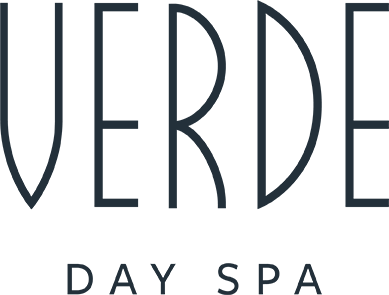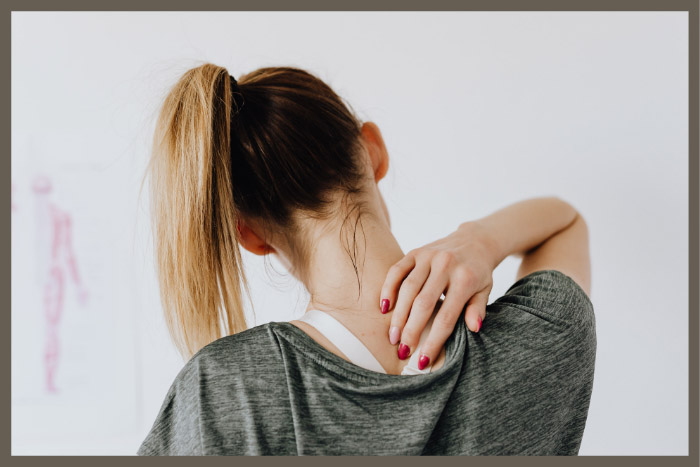We very often hear about injuries in sport, but these do not only affect athletes or amateur sports people.
An injury, i.e. the result of an injury to the body, does not necessarily occur after an impact with an external force (as in contact sports or accidents) or due to sudden, violent movements. Prolonged, repeated overstretching of soft tissues can also lead to injury. Such damage to tissues, and sometimes even to adjacent joints, is often more dangerous than damage to muscles.
While pulled muscles regenerate relatively quickly, with pain coexisting for about one to two weeks, soft tissues regenerate differently. The healing process can end up with scar tissue, which is much less elastic and shortens, so that movements can cause prolonged pain.
One of the more common injuries in office work is neck strain.
If the soft tissues in the neck are stretched, pain can occur in the neck area itself, but also in the head. Such stretches are most often caused by an incorrect position held for a long time. If it is purely an overload, it is possible to remedy the situation by using exercises to relax and strengthen the neck, but more importantly by working on one's own posture while sitting.
The situation can become more complicated if there is damage to the ligaments surrounding the disc in the cervical spine, so that it can lose its ability to absorb shock.
This is when the inner part of the disc may bulge outwards, i.e. a disc protrusion will form. Very large bulges can press on the spinal nerve, which will result in pain being felt in the arm and sometimes even the hand. This situation affects the restriction of mobility, the occurrence of pain when trying to perform certain movements, including head movements or mundane daily activities-holding a cup, comb, etc.
Frequent headaches can therefore be a symptom of problems in the cervical spine. Such pains are localised and described as: "at the top of the nape of the neck and at the base of the skull and in the back of the head on one or both sides, extending from the base of the back of the head to just below the parietal region, extending from the back of the head through the top of the head to a point above or behind the eyeball, also on one or both sides, spread across the forehead and often felt behind the eyeballs, spread around the head, often described as a 'too tight band' feeling."
Incorrect sitting posture can also lead to disorders of the lumbar and sacral spine. The disappearance of the natural lordosis among people with sedentary lifestyles, stiffness or discomfort when standing up and accompanying pain in these sections are often reported. Such situations may be indicative of stretching of the soft tissues, ligaments around the vertebrae in the lower spine or displacement of intervertebral disc structures (disc prolapse).
However, an incorrect sitting position does not only affect the spine. It is worth noting that rounding the back also affects the front part of the body. Hence, we may notice diaphragm dysfunction in people working at a desk, which definitely hinders effective breathing.
Shallow breaths not only result in poorer oxygenation of organs and tissues, but also affect our brain function. Short and shallow breaths are a signal to the brain of a life-threatening situation, resulting in the release of stress hormones to make it easier for us to fight or flee.
Stress, trouble keeping calm and cool, and disturbed thought processes can therefore originate from postural errors.
A rounded back can also result in pressure on the spinal cord. As a result, numbness and tingling in the hands and neck can occur. This is a signal that not enough blood is reaching the hands. Although current research does not confirm an increased risk of carpal tunnel syndrome in people who work at a desk, prolonged compression of the median nerve in the carpal tunnel can lead to its development.
Age, obesity, endocrine, musculoskeletal and vasomotor disorders are also increased risk factors. The main symptoms are pain in the hand and wrist, a feeling of tingling, numbness in the fingers, sensory disturbance, reduced mobility and hand dexterity.
Incorrect sitting posture can also manifest as excessive extension of the head in front of the neck. This results in abnormalities of the facial and neck muscles, impairs breathing, can lead to the accumulation of a fatty hump on the neck, or lead to disorders of the temporomandibular joint. The latter can lead to a painful condition, Costen's syndrome, which manifests as dull, unilateral pain in the temporomandibular joint area, radiating to the ear or mastoid process.
Popular injuries
Injuries to joints, ligaments and joint capsules - one of the most common joint injuries is a sprain, during which the periarticular ligaments and joint capsule are overstretched, without displacement of the joint surfaces in relation to each other. Depending on the severity of the injury, it may be accompanied by pain of varying intensity, haematomas and swelling, impaired joint function, and pathological movements. Initial treatment is aimed at relieving pain - so cold compresses are applied and the limb is immobilised; later massage and exercise are added.
Another equally common one is a joint dislocation. In this injury, there is already displacement of the joint surfaces relative to each other. Treatment of this injury includes positioning, immobilisation, massage and exercise.
Muscle pulls and strains- a muscle pull is classified as a mild injury. This injury occurs when there is reduced stretch during rapid movement. It is not a dangerous injury, but if left untreated it can lead to atrophy of the muscle. If the stretch is accompanied by a contusion and a small haematoma, cold compresses should be applied and the area immobilised. In the case of a large haematoma, immobilise two adjacent joints for about 10 days and apply local cold compresses. It is a good idea to include massages and exercises after consulting your doctor or physiotherapist.
We speak of a muscle rupture when a large number of muscle fibres are damaged. In this case, prolonged immobilisation is necessary.
Rupture of the Achilles tendon - this most commonly occurs when there is tension and rapid stretching of the triceps calf muscle. Although the Achilles is the largest and strongest tendon in the human body, its rupture is a fairly common injury. Symptoms of a rupture include diffuse pain in the lower leg, crackling of the tendon during movement and a palpable loss of the tendon or thickening of the tendon. The treatment process includes immobilisation, massages and exercises, but may even end with surgery (if there is no improvement after about six months of treatment with other methods).
"Tennis elbow", or periarthritis of the elbow - is a pain syndrome of the elbow joint area, resulting from inflammation of the attachments of the extensor muscles of the wrist to the lateral epicondyle of the humerus and is an overload injury. The pain may also extend to the lateral forearm and wrist area. Such pain usually impedes daily function, making it impossible to hold objects or shake hands. Treatment depends on the period of illness and includes freezing, pharmacotherapy and rehabilitation.
Shin splints - this is one of the more common injuries of amateur runners, but can also affect other athletes, including professionals. This injury does not have its own specific name in Polish, but refers to pain in the tibia, which is the shin bone. It can be experienced as pain running along the bone or as pain in the bone itself and it can occur during or after training. Its cause cannot be clearly identified. It may have its origin in an imbalance of muscles between the flexors and extensors of the foot, inflammation of the muscle attachments. This injury can be caused by a lack of warm-up and stretching, worn-out footwear, training on too hard a surface, training too intensively, and continuing training despite the first signs of pain. Currently, the only recommended form of treatment is to stop training altogether, rest and stretch.
Patellofemoral band syndrome - this is another injury more commonly encountered by amateur athletes. It manifests as diffuse pain in the lateral aspect of the thigh and is caused by insufficient pelvic stabilisation, which in turn allows us to support ourselves too powerfully on one limb. This does not sound like a recipe for a good workout. Weakness of the iliac tibialis band can be influenced by, among other things, curvature of the spine, contractures of the ischiofemoral muscles, abnormal foot arches and shortening of one limb.
Why does it pay to prevent injuries?
Just as we work for years for most diseases of civilisation, this is also the case with injuries. Our body has been endowed with incredible regenerative abilities, but these processes require not only time, but also resources. Bad postural habits, poor movement patterns, excessive strain on muscles, joints and tissues, hard physical work and intense sport repeated over and over again for hours can lead to serious injuries.
An injury may involve permanent tissue damage, which can turn from flexible structures into rigid, shortened scar tissue. Hence, the risk of re-injury increases, but it is also possible that the performance of certain movements will be restricted and associated with pain. In addition, the injury carries the risk of developing compensations, i.e. substitute movements that make our lives easier in the short term, but returning to the correct movement often requires work with a physiotherapist. Why is it necessary to work with compensations? Our body works like an interconnected system of vessels, so disorders even in distant parts of the body can impinge on the work of other parts. This has to do with the fascial bands. Therefore, even a disturbance in the ankle area, can cause pain in the jaw.
Treatment and recovery from an injury can be a lengthy, costly and painful process. It is therefore worth preventing rather than treating.





